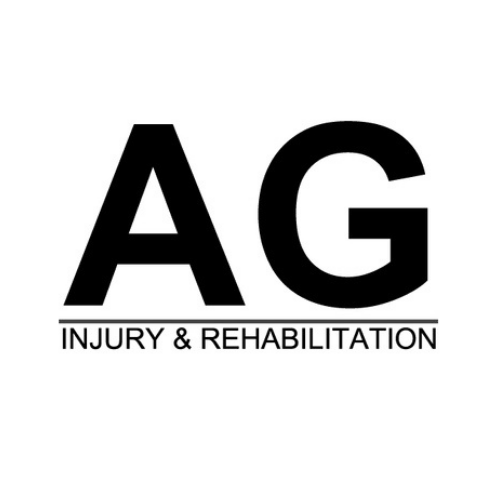Every 90 minutes of professional soccer played, a player somewhere suffers a hamstring injury. This seemingly simple muscle group at the back of your thigh holds tremendous power - and surprising vulnerability - that can make or break an athlete's season in a split second.
Understanding hamstring injuries isn't just for elite athletes though. Whether you're a weekend warrior, casual jogger, or someone who simply enjoys staying active, knowing how to protect and care for your hamstrings can mean the difference between staying in the game and spending months in recovery.
Understanding Hamstring Injuries
A hamstring injury happens when muscles at the back of your thigh get stretched too far or face sudden stress during movement. These injuries range from mild muscle pulls to complete tears of the muscle tissue. The most common types include strains, partial tears, and full ruptures.
When the hamstring gets injured, you'll likely feel pain in the thigh. Getting checked out right away helps determine the right treatment path and stops problems from getting worse. Quick action often leads to better healing outcomes.
Anatomy of the Hamstring Muscles
The muscle group works together biceps femoris, semitendinosus, and semimembranosus. These muscles start at the bottom of your pelvis, run down the back of your thigh, and connect to your lower leg bones below the knee.
In daily movement, your hamstrings handle two key jobs. They help you extend your leg backward when walking or running, and they let you bend your knee when sitting down. This muscle group pairs with your quadriceps to give your legs stability and power during activities.
Common Causes of Hamstring Injuries
Muscle overload stands as the main reason for hamstring problems, especially during movements that stretch the muscle while it's working. Athletes often get hamstring strains during quick sprints or sudden stops.
Poor muscle flexibility makes injuries more likely, particularly when the strength between front and back leg muscles is out of balance. Many people get hamstring strains because they skip proper warm-ups before exercise. When muscles get tired, they become more prone to injury, which is why fatigue plays a big role in these injuries.
Athletes in running sports face higher risks, especially if they don't take time to stretch or build strength in their leg muscles. Baseball players, soccer athletes, and runners need to pay special attention to their hamstring health.
Risk Factors for Hamstring Injuries
Several factors make people more likely to get hamstring strains. Age plays a role, as older athletes face higher risks of muscle pulls. Past injuries also increase the chance of future problems - once you've had a hamstring strain, you're more likely to get another one.
Poor muscle conditioning sets the stage for injury. When your quadriceps are much stronger than your hamstrings, it creates an imbalance that stresses the back of your thigh. Tired muscles during long training sessions or games become weak spots, making strains more common.
Sports that need fast running and quick direction changes put extra stress on hamstrings. Track athletes, soccer players, and basketball players need to examine hamstring injuries carefully, especially during intense competition periods.
Signs and Symptoms of a Hamstring Injury
Most people with hamstring muscle injuries feel a sudden, sharp pain in the back of their thigh during activity. Common symptoms include swelling around the injured area and visible bruising that shows up within days. Many people find it hard to walk normally or put weight on the affected leg.
The pain level varies based on how bad the injury is. Mild strains might just feel tight and sore, while serious tears can make walking impossible. You might notice pain when trying to straighten your leg or bend over. If you can't walk, see lots of bruising, or hear a popping sound during injury, you should get checked by a doctor right away.
Grading System for Hamstring Strains
Doctors sort hamstring injuries into three levels based on how severe they are. Grade 1 strains are mild pulls where only a few muscle fibers get damaged. You might feel slight pain and stiffness, but you can usually walk normally.
Grade 2 injuries involve partial muscle tears. The pain comes on sharply, and you'll see swelling and some loss of strength. Walking might become difficult, and sports activities will need to stop for a while.
Grade 3 represents a complete muscle tear. These severe injuries cause intense pain right away, major swelling, and make walking very hard. You might hear a "pop" when it happens. MRI scans help doctors check how bad the tear is and plan the right treatment.
Diagnosis Methods
Most doctors start by checking your leg movement and asking about how the injury happened. They'll test how far you can stretch your leg and look for tender spots along your thigh muscles.
Medical imaging helps doctors get a clear picture of the damage. MRI scans show detailed views of the muscle tissue and can spot exactly where tears occur. These scans tell doctors if you have a minor strain or a more serious tear.
Doctors also check for other leg problems since thigh pain can come from different sources. They might test your knee and hip function to make sure the pain isn't coming from somewhere else in your leg.
Treatment Options
The first step in handling a hamstring injury starts with the RICE method - rest the leg, ice the hurt area, wrap it with compression bandages, and keep the leg raised. This helps reduce swelling and pain in the first 48-72 hours after injury.
For pain control, doctors often suggest over-the-counter medications like ibuprofen. Applying ice packs for 15-20 minutes several times daily helps limit inflammation and discomfort.
Physical therapy and rehabilitation plays a key role in recovery. Therapists guide patients through gentle stretches and exercises that build strength without causing more damage. As healing progresses, exercise programs get more intense to help the muscle regain its full function.
Rehabilitation Process and Timeline
Recovery from a hamstring injury follows clear steps. The first few days focus on rest and gentle movement, with ice treatment to reduce swelling. As pain goes down, light stretches and simple exercises begin.
Most Grade 1 strains heal within 2-3 weeks with proper care. Grade 2 injuries need 4-8 weeks of focused treatment. Grade 3 tears can take 3-6 months to heal fully, especially if surgery was needed.
Physical therapists track progress through strength tests and movement checks. Patients must complete each recovery phase before moving to harder exercises. Skipping steps or rushing back to sports too soon often leads to new injuries.
Surgical Interventions
Most hamstring strains heal without surgery, but complete muscle tears or injuries where the tendon pulls away from the bone need surgical repair. This typically happens with Grade 3 injuries that don't respond to other treatments.
During surgery, doctors reattach torn tendons to the bone using strong stitches and sometimes small anchors. For muscle tears in the middle of the hamstring, surgeons carefully connect the torn ends back together.
Recovery after hamstring surgery takes 3-4 months. Patients start with protected leg movements, then move through stages of physical therapy. Most athletes return to sports between 6-9 months after surgery, once they regain full strength and movement.
Prevention Strategies
Regular warm-up exercises stand as the first defense against hamstring muscle injuries. Start with 5-10 minutes of light cardio to get blood flowing to your leg muscles before any intense activity.
Daily stretching helps keep hamstrings flexible and strong. Focus on slow, steady stretches that target the back of your thighs. Add exercises that build both hamstring and quadriceps strength to create balanced leg muscles.
Good running form matters too. Keep your stride length natural and avoid overreaching. Build up your training intensity slowly - jumping into hard workouts too fast often leads to muscle strain. Rest between workout sessions lets your muscles recover and rebuild.
Recovery Tips and Best Practices
Getting back to sports after a hamstring strain requires rehabilitation needs patience and careful planning. Start with basic activities like walking before moving to light jogging. Add speed and distance slowly - no more than 10% increase each week.
Pay attention to warning signs from your body. Stop activity if you feel pain, pulling, or unusual tightness in your thigh. Take extra rest days between workouts, especially in the first few weeks back.
Daily habits matter too. Get enough sleep to help muscle repair, drink water throughout the day, and eat protein-rich foods. Keep up with your hamstring rehab exercises, even on rest days, to maintain flexibility and reduce the chance of getting hurt again.
When to Return to Sports or Regular Activities
Athletes need clear signs before heading back to sports after a hamstring injury. Physical tests show readiness when you can follow rehabilitation protocols without pain, match your uninjured leg's strength, and run without limping.
Watch for warning signals that mean you need more recovery time. Pain during movement, weakness in the leg, or limited motion all point to waiting longer before returning. Stiffness after exercise might also mean your hamstring needs more healing time.
Start with basic moves like jogging before trying quick sprints or sharp turns. Test each new activity for 15-20 minutes, then check how your leg feels the next day. If pain stays away, slowly add more intense moves to your routine.
Long-term Management of Hamstring Injuries
Managing hamstring health requires constant attention to muscle care. Regular stretching keeps the muscles flexible, while targeted exercises maintain strength in both hamstrings and quadriceps. Most athletes benefit from 2-3 strength sessions weekly, focusing on exercises that work the muscles through their full range of motion.
Watch for early warning signs like muscle tightness, minor aches, or reduced flexibility. These symptoms often signal potential problems. Taking rest days between hard workouts gives muscles time to recover. Adding gentle stretching exercises on off days helps maintain muscle length without causing strain.
Many athletes find success with weekly maintenance routines that mix strength work, flexibility training, and proper warm-up habits. This balanced approach helps prevent future hamstring problems while supporting overall leg health.
Potential Complications of Untreated Hamstring Injuries
Leaving a hamstring injury without proper treatment leads to several ongoing problems. The muscle can heal incorrectly, causing lasting pain and weakness in the leg. Many athletes find their speed and power drop significantly when hamstring injuries don't get proper care.
Scar tissue often builds up in untreated muscle tears, making the area stiff and prone to new injuries. This creates a cycle where each new strain becomes harder to heal. Athletes might change how they move to avoid pain, which puts stress on other leg muscles and joints.
Without treatment, simple activities like walking or climbing stairs can become painful tasks. The risk of getting hurt again stays high, and athletic performance often suffers long-term effects.
In Conclusion
A hamstring injury might seem like a temporary setback, but its impact on mobility and athletic performance demands serious attention. From prevention through rehabilitation, taking the right steps at the right time makes all the difference in recovery outcomes and future injury prevention.
The key lies in respecting the healing process while maintaining a proactive approach to strengthening and conditioning. With proper care, education, and patience, most people can return to their favorite activities and prevent future hamstring problems through smart training and maintenance routines.

